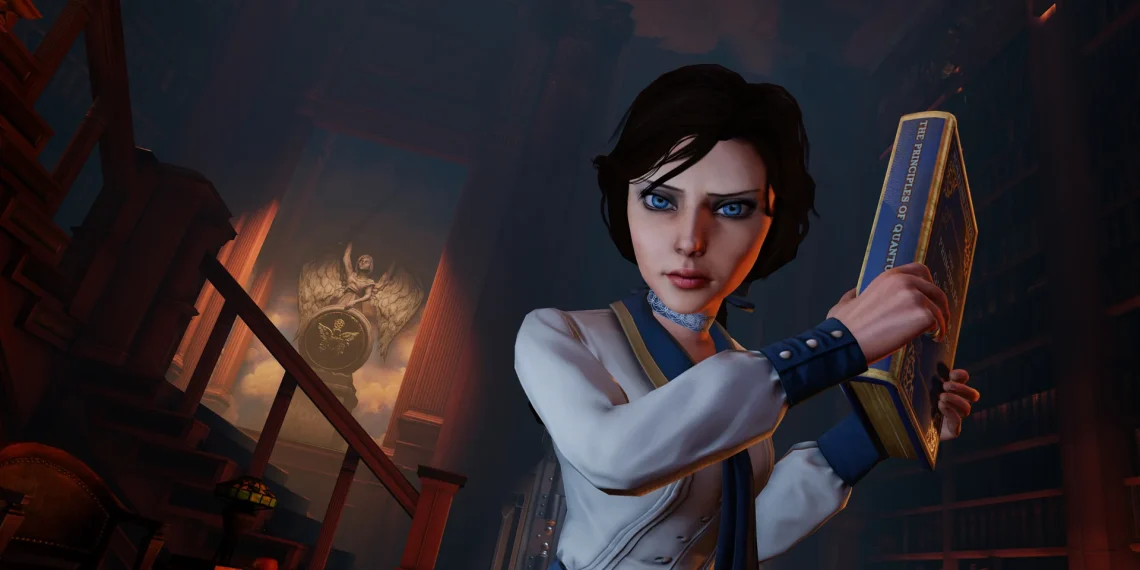Irrational Games’ BioShock series has long been known for bending the minds of players and challenging their perception of reality. In BioShock: Infinite, this concept is taken even further, exploring themes of fate, time travel, alternate realities, and quantum entanglement. The ending of the game is intricate and thought-provoking, often leaving players with more questions than answers. We will now break down the key components of BioShock: Infinite’s ending and explain how all the pieces fit together.
Quantum mechanics is a notoriously difficult concept to explain, even for experts. However, the game presents a simplified version of quantum theory to help players understand its relevance. Imagine walking down the street and deciding to cross to the other side. Under traditional thinking, your choice shapes your reality, but quantum mechanics suggests that every decision creates parallel universes. This interpretation, popularized by physicist Hugh Everett, proposes that every decision we make spawns an alternate reality where the opposite choice is made. While this theory remains a subject of debate, the game’s ending aligns perfectly with Everett’s “many-worlds” interpretation. Elizabeth, one of the central characters, describes the stars in the sky as not stars at all, but rather “worlds” — an analogy that reflects the quantum nature of the universe and the multiverse theory.
BioShock Infinite Ending Explained

In BioShock: Infinite, Rosalind Lutece, a brilliant physicist, and her “brother” Robert are key players in the narrative. The twins are not ordinary siblings, but rather versions of one another from different parallel realities. They introduce Booker DeWitt to the Columbia, and their presence acts as a constant commentary on the events unfolding throughout the game. In fact, many of their interactions with Booker hint at the larger plot twist that becomes clearer as the story progresses.
Their observations about Booker, such as his uncanny ability to flip a coin heads-up every time, reveal their knowledge of his fate and the realities of Columbia. Robert, in particular, demonstrates the “many-worlds” interpretation when he explains that he has experienced the same events as Booker. Their presence in the game shows how they manipulate events across parallel worlds, guided by their own experiments in quantum mechanics.
Elizabeth: A Bridge Between Realities
Elizabeth, another central character, has the unique ability to interact with and manipulate tears in reality. These tears allow her to peer into other parallel worlds, and at times, even travel between them. As the game progresses, we learn that Elizabeth’s powers are linked to the circumstances of her birth and the manipulation of her reality by Comstock. Her powers, however, are initially restricted by the Siphon, a device that limits her abilities.
Throughout the game, Elizabeth shows signs of being more than just a passive observer. She actively seeks ways to break free from the constraints placed on her by Comstock, using her abilities to influence the course of events. By the end of the game, Elizabeth becomes instrumental in understanding the quantum mechanics that govern the multiverse. She learns how to destroy the Siphon, unlocking her full potential, and enabling her to see the infinite realities that shape her existence.

The Baptism and Its Significance
One of the most important moments in BioShock: Infinite is the scene where Booker DeWitt undergoes a baptism. The significance of this event extends beyond its religious symbolism. The baptism represents a critical point in Booker’s life where he made a choice that would shape his future. In one reality, Booker rejects the baptism and continues his life as a private investigator. In another, he accepts the baptism and becomes Zachary Hale Comstock, the founder of Columbia.
This divergence creates two distinct paths for Booker, and the consequences of these choices ripple through the game’s narrative. Comstock, now aware of his alternate self’s actions, seeks to manipulate Booker and ensure that his future aligns with the prophecy. The baptism is not only a pivotal moment in Booker’s personal journey but also the defining event that triggers the conflict at the heart of the game.
The Role of Comstock and the Destruction of the Cycle
Throughout the game, Comstock emerges as the antagonist, manipulating events in Columbia to achieve his vision of a utopian society. However, it is revealed that Comstock is a version of Booker from a parallel reality. Comstock’s inability to have children leads him to seek out Booker’s daughter, Anna, who is later revealed to be Elizabeth. The conflict between Booker and Comstock becomes deeply personal, as Booker attempts to reclaim his daughter, who has been kidnapped and manipulated by Comstock for his own purposes.
The key to breaking the cycle that binds Booker and Comstock lies in the baptism scene. Elizabeth explains that in order to truly eliminate Comstock from existence, neither Booker nor Comstock can survive. In a tragic moment, Booker accepts this truth and allows both himself and Comstock to drown simultaneously. This act of self-sacrifice erases Comstock and the destructive cycle he created.

Unanswered Questions and Final Thoughts
While the game’s ending provides closure to the central conflict between Booker, Elizabeth, and Comstock, there are still many lingering questions that remain unanswered. One of the biggest mysteries revolves around Elizabeth’s journey to Rapture, the setting of the original BioShock game. How does Elizabeth know about Rapture, and why is she able to access it through tears? This unexplained moment adds a layer of intrigue and leaves room for speculation.
Additionally, the game’s final scene raises questions about Booker’s fate. The ambiguous ending suggests that Elizabeth’s sacrifice may not be as final as it seems. The closing shot shows Booker back in his office, wondering if Anna has been returned to him, but it is unclear whether this is a continuation of the story or a different timeline altogether.
Despite these unanswered questions, BioShock: Infinite remains a masterful exploration of alternate realities, quantum mechanics, and the impact of choice. The game’s complex narrative challenges players to think deeply about the nature of fate and the consequences of their actions. While the ending may not provide all the answers, it leaves players with plenty to ponder, ensuring that BioShock: Infinite will remain a topic of discussion for years to come.




